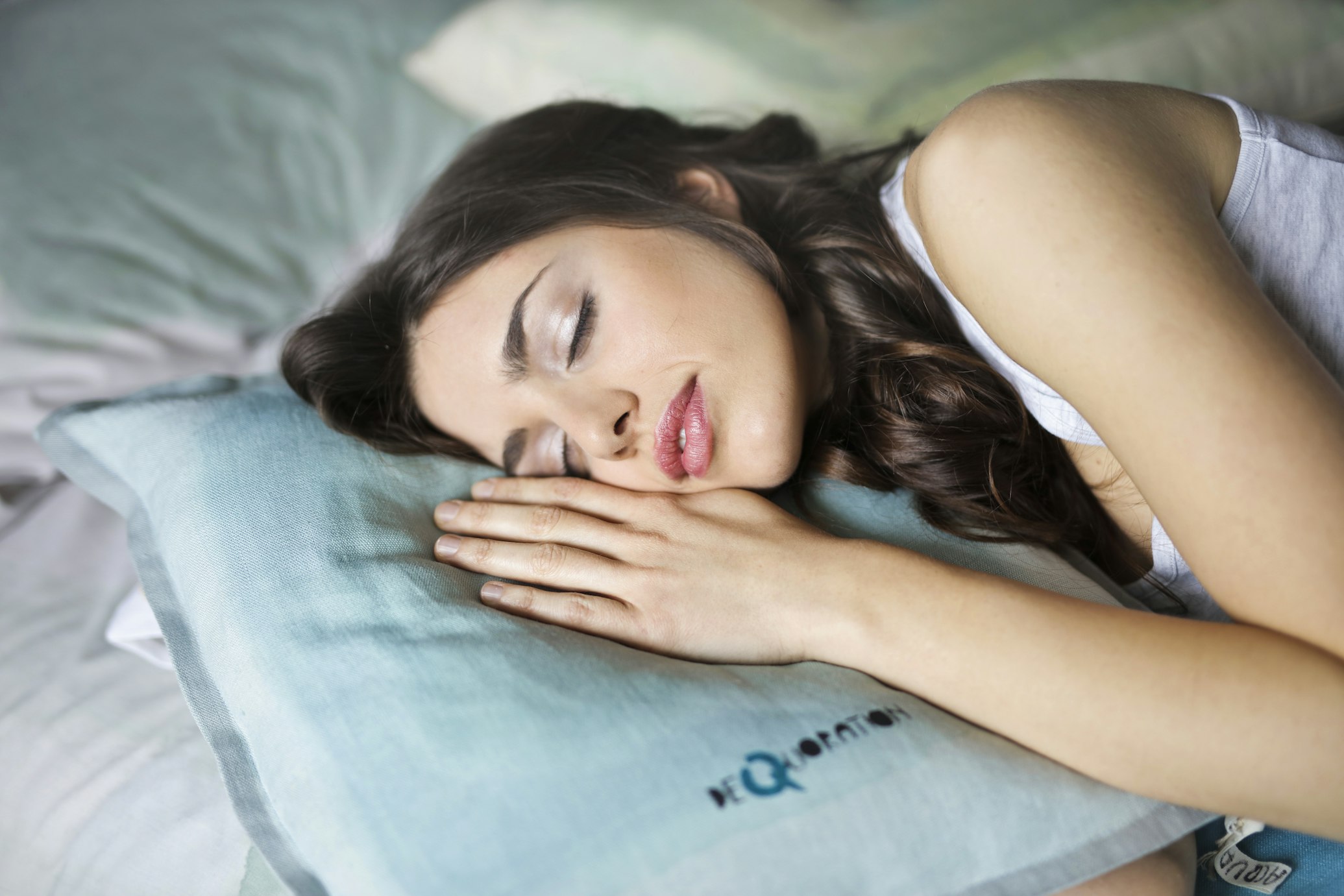Science-Based Sleep Hygiene: 12 Evidence-Backed Habits for Better Sleep

If you’ve ever tossed and turned all night or felt groggy despite getting enough hours of sleep, you’re not alone. Poor sleep quality affects millions of Americans, but the solution might be simpler than you think. Sleep hygiene—a set of evidence-based practices and environmental modifications—can dramatically improve both the quality and duration of your sleep.
This comprehensive guide presents 12 scientifically-proven sleep hygiene strategies based on research from leading institutions including the American Academy of Sleep Medicine, CDC, and National Sleep Foundation.
What Is Sleep Hygiene?
Sleep hygiene refers to a set of behavioral and environmental recommendations intended to promote healthy sleep. Originally developed for treating mild to moderate insomnia, these practices are now recognized as essential for anyone wanting to optimize their sleep quality.
Strong sleep hygiene means having both a bedroom environment and daily routines that promote consistent, uninterrupted sleep. The best part? Sleep hygiene has little cost and virtually no risk, making it an important part of public health strategy.
Why Sleep Hygiene Matters
Research consistently shows that good sleep hygiene practices are associated with:
- Improved sleep quality and duration
- Better cognitive performance and memory
- Enhanced mood and emotional regulation
- Stronger immune function
- Reduced risk of chronic diseases
- Better physical performance and recovery
As the American Academy of Sleep Medicine states in their position statement: “Sleep is essential to health.”
The 12 Evidence-Based Sleep Hygiene Practices
1. Maintain a Consistent Sleep Schedule
The Science: Your body’s internal clock (circadian rhythm) thrives on consistency. Research shows that irregular sleep patterns can disrupt your natural sleep-wake cycle and make it harder to fall asleep and wake up.
How to Apply:
- Go to bed and wake up at the same time every day, including weekends
- Avoid “social jet lag” by not dramatically shifting your sleep schedule on days off
- If you must adjust your schedule, do so gradually (15-30 minutes at a time)
2. Create an Optimal Sleep Environment
The Science: Environmental factors significantly impact sleep quality. Studies show that noise, light, and temperature all affect sleep architecture and the ability to maintain deep sleep.
Temperature Control:
- Keep your bedroom between 65°F to 68°F (18°C to 20°C)
- Most people sleep better in slightly cool environments
Light Management:
- Use blackout curtains or eye masks to block outside light
- Minimize light exposure from electronic devices
- Consider light-blocking curtains if street lights shine into your bedroom
Noise Reduction:
- Use earplugs or white noise machines to mask disruptive sounds
- Heavy curtains and rugs can help absorb sound
- Consider a fan or white noise app for consistent background sound
3. Optimize Your Sleep Surface
The Science: An uncomfortable mattress or pillow can cause frequent awakenings and prevent deep sleep phases.
How to Apply:
- Replace your mattress every 7-10 years or when it becomes uncomfortable
- Choose pillows that support your preferred sleep position
- Ensure your bedding is comfortable and breathable
4. Get Strategic Light Exposure
The Science: Light is one of the most powerful regulators of your circadian rhythm. Exposure to bright light during the day helps maintain a healthy sleep-wake cycle.
Daytime Light Exposure:
- Get natural sunlight exposure, especially in the morning
- Spend time outdoors or near bright windows during the day
- If natural light is limited, consider a light therapy box (10,000 lux)
Evening Light Management:
- Dim lights 1-2 hours before bedtime
- Use amber or red-tinted bulbs in evening lighting
- Install blue light filters on electronic devices
5. Exercise Regularly (But Time It Right)
The Science: Regular physical activity can improve sleep quality and help you fall asleep faster. However, vigorous exercise too close to bedtime can be stimulating and interfere with sleep.
How to Apply:
- Aim for at least 30 minutes of moderate exercise most days
- Finish intense workouts at least 3-4 hours before bedtime
- Light stretching or yoga can be beneficial in the evening
- Find the exercise timing that works best for you—some people tolerate evening exercise better than others
6. Watch Your Caffeine Intake
The Science: Caffeine has a half-life of 3-7 hours, meaning it can stay in your system well into the evening if consumed too late. Research shows that caffeine consumption even 6 hours before bedtime can significantly disrupt sleep.
How to Apply:
- Avoid caffeine after 2 PM if you’re sensitive
- Consider avoiding coffee after lunch if it keeps you awake at night
- Remember that caffeine is also found in tea, chocolate, and some medications
- For habitual users, the daily deviation from normal caffeine intake may be more relevant than absolute amounts
7. Limit Alcohol Consumption
The Science: While alcohol might make you feel drowsy initially, it actually disrupts sleep architecture later in the night. Alcohol reduces REM sleep and can cause frequent awakenings.
How to Apply:
- Avoid alcohol within 3-4 hours of bedtime
- If you drink, limit consumption and drink plenty of water
- Be aware that alcohol can worsen snoring and sleep apnea
8. Avoid Nicotine
The Science: Nicotine is a stimulant that promotes arousal and wakefulness, primarily through stimulation of cholinergic neurons in the basal forebrain.
How to Apply:
- Avoid smoking, especially in the evening
- If you use nicotine replacement therapy, avoid it close to bedtime
- Seek support for smoking cessation for overall health benefits
9. Manage Evening Meals
The Science: Large meals close to bedtime can cause discomfort and disrupt sleep. The digestive process can interfere with your body’s preparation for sleep.
How to Apply:
- Eat your last large meal at least 3 hours before bedtime
- If you’re hungry before bed, choose a light snack
- Avoid spicy or acidic foods that might cause heartburn
- Stay hydrated during the day but limit fluids 2 hours before bed
10. Create a Wind-Down Routine
The Science: A consistent pre-sleep routine signals to your body that it’s time to prepare for sleep. This behavioral conditioning can help trigger the onset of sleepiness.
Effective Wind-Down Activities:
- Read a book in soft light
- Take a warm bath or shower
- Practice gentle stretching or progressive muscle relaxation
- Try deep breathing exercises or meditation
- Listen to calming music or nature sounds
Avoid Stimulating Activities:
- Work-related tasks
- Intense conversations or emotional discussions
- Vigorous exercise
- Bright screens (unless using blue light filters)
11. Manage Stress and Racing Thoughts
The Science: Emotional stress, anxiety, and racing thoughts are major contributors to insomnia. Current sleep hygiene practices often fail to adequately address these psychological factors.
How to Apply:
- Practice stress-reduction techniques like meditation or mindfulness
- Keep a journal to write down worries or tomorrow’s tasks
- Try progressive muscle relaxation or guided imagery
- Consider talking to a counselor if stress significantly impacts your sleep
12. Use Your Bedroom Only for Sleep and Intimacy
The Science: Creating a strong mental association between your bedroom and sleep helps condition your brain to feel sleepy when you enter the space.
How to Apply:
- Remove TVs, computers, and work materials from the bedroom
- If you can’t fall asleep within 20 minutes, get up and do a quiet activity until sleepy
- Have children and pets sleep elsewhere if they disrupt your sleep
- Keep electronic devices in another room
Smart Napping Strategies
The Research: Contrary to popular belief, not all naps interfere with nighttime sleep. Studies suggest that naps 30 minutes or shorter are ideal, though some research has found that longer naps might not disrupt nighttime sleep for everyone.
Napping Guidelines:
- Keep naps to 20-30 minutes when possible
- Avoid napping after 3 PM
- If you must nap longer, aim for 90 minutes to complete a full sleep cycle
Individual Factors to Consider
Sleep hygiene isn’t one-size-fits-all. Research suggests that sleep hygiene practices need to be tailored individually, demanding a precision medicine approach. Consider these factors:
- Personal sensitivity: Some people are more sensitive to caffeine, light, or noise
- Work schedule: Shift workers may need modified approaches
- Age: Older adults may have different needs than younger adults
- Health conditions: Sleep disorders may require specialized approaches
- Lifestyle: Your daily routine should inform your sleep hygiene strategy
The Implementation Process
Start Gradually: Don’t try to implement all 12 strategies at once. Research shows that behavioral change takes time and may require commitment to planned actions for successful implementation.
Track Your Progress: Keep a sleep diary for at least two weeks, noting:
- Sleep and wake times
- Sleep quality ratings
- Daytime activities and their timing
- Substances consumed and when
- Evening routines
Be Patient: Sleep hygiene improvements may take several weeks to show full effects. Consistency is more important than perfection.
When Sleep Hygiene Isn’t Enough
If you’ve consistently practiced good sleep hygiene for 4-6 weeks and still experience sleep problems, consider consulting a healthcare provider. You may have an underlying sleep disorder that requires professional treatment, such as:
- Sleep apnea
- Restless leg syndrome
- Chronic insomnia
- Circadian rhythm disorders
Common Sleep Hygiene Mistakes
Mistake 1: All-or-Nothing Thinking
Don’t abandon your entire routine if you break one rule occasionally. Consistency over time matters more than perfection.
Mistake 2: Ignoring Individual Differences
What works for others might not work for you. Experiment to find your optimal approach.
Mistake 3: Expecting Immediate Results
Sleep hygiene is about building long-term habits, not quick fixes.
Mistake 4: Focusing Only on Bedtime
Your daytime activities significantly impact nighttime sleep. Don’t neglect morning and afternoon habits.
The Bottom Line: Your Sleep Hygiene Action Plan
Good sleep hygiene is one of the most effective, low-cost interventions for improving sleep quality. Start with these priority actions:
- Week 1-2: Establish a consistent sleep schedule and optimize your bedroom environment
- Week 3-4: Add a wind-down routine and manage light exposure
- Week 5-6: Fine-tune caffeine, alcohol, and meal timing
- Ongoing: Track your progress and adjust strategies based on what works best for you
Remember, sleep hygiene education should be part of broader health promotion strategies. Better sleep doesn’t just help you feel rested—it’s fundamental to your physical health, mental wellbeing, and overall quality of life.
Your commitment to good sleep hygiene is an investment in your long-term health and daily performance. Start implementing these evidence-based strategies today, and give your body the quality sleep it needs to thrive.
This guide is based on peer-reviewed research from the American Academy of Sleep Medicine, Centers for Disease Control and Prevention, National Sleep Foundation, and published studies in leading sleep medicine journals. For persistent sleep problems, consult with a healthcare provider or sleep specialist.









